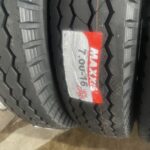SUVs (Sport Utility Vehicles) and CUVs (Crossover Utility Vehicles) are two popular high-riding vehicle types in the Vietnamese market. Although often confused due to their similar appearance, the core difference lies in the truck chassis structure – a factor that determines handling, durability, and driving experience. This article from Xe Tải Mỹ Đình delves into the chassis structure of SUVs and CUVs, helping readers understand and make the best choice.
Body-on-Frame Chassis – The “Backbone” of SUVs
True SUVs, by nature of being versatile sports vehicles, inherit a body-on-frame chassis structure from trucks and pickups. Simply put, the body-on-frame chassis is like a solid backbone, completely separate from the body shell above. The body and frame are manufactured independently, and then assembled together.
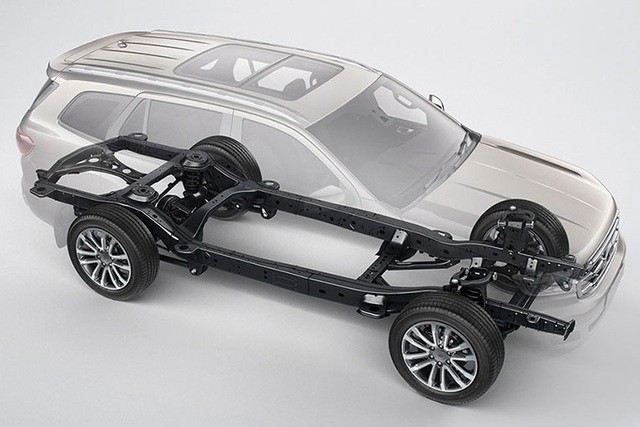 Body-on-frame chassis of a Ford Everest SUV
Body-on-frame chassis of a Ford Everest SUV
The body-on-frame truck chassis structure offers outstanding advantages for SUVs, especially in terms of load capacity and performance on complex terrain:
- High Rigidity and Load Capacity: The body-on-frame chassis is made of thick box steel, creating an extremely strong frame. This helps the SUV have good torsional stiffness when carrying heavy loads or moving on rough, off-road terrain.
- Durability and Longevity: The separate structure helps distribute the impact force evenly throughout the frame, reducing the load on the body shell and other parts, thereby increasing the vehicle’s durability and lifespan.
- Superior Off-Road Capability: The body-on-frame chassis, combined with an independent or multi-link suspension system, helps the SUV overcome difficult terrain such as gravel roads, mud, or steep slopes with ease.
- Easy to Repair and Upgrade: In the event of a collision, the body-on-frame chassis protects the body better and makes it easier to repair and replace damaged parts. This structure also facilitates the upgrading of the suspension, engine, and other parts.
However, the body-on-frame truck chassis structure also has some disadvantages:
- Large Vehicle Weight: The body-on-frame chassis significantly increases the overall weight of the vehicle, affecting acceleration and fuel consumption.
- Poorer Noise Isolation and Vibration Damping: Due to the separate body and frame, the ability to absorb and dampen vibrations from the road surface is worse than with a unibody chassis.
- High Ground Clearance and Large Center of Gravity: High ground clearance helps SUVs overcome terrain better, but also increases the vehicle’s center of gravity, making it difficult to corner at high speeds and reducing stability on flat roads.
Unibody Chassis – The Optimal Solution for CUVs
CUVs, or Crossover Utility Vehicles, are positioned as urban utility vehicles, combining the advantages of SUVs and sedans. The biggest difference between CUVs and SUVs lies in the chassis structure. CUVs use a unibody chassis, similar to sedans and hatchbacks. In the unibody structure, the body and frame are integrated into a single block, forming a single load-bearing structure.
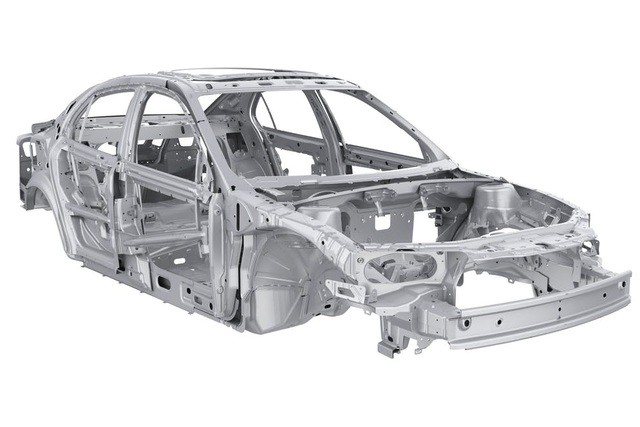 Unibody chassis of a CUV
Unibody chassis of a CUV
The unibody chassis structure offers outstanding advantages for CUVs, suitable for urban and highway use:
- Light Vehicle Weight: The unibody chassis significantly reduces the weight of the vehicle compared to the body-on-frame chassis, improving acceleration, fuel economy and more flexible urban mobility.
- Better Noise Isolation and Vibration Damping: The unibody structure helps absorb and dampen vibrations better, providing a smoother and more comfortable driving experience for passengers.
- Low and Stable Center of Gravity: The unibody chassis allows for a lower vehicle center of gravity, helping the CUV to be more stable when cornering, moving at high speeds, and reducing the risk of rollover.
- Flexible and Modern Design: The unibody structure allows designers to create CUV models with softer, more modern and diverse designs.
However, the unibody chassis also has certain limitations:
- Lower Load Capacity and Durability: Compared to the body-on-frame chassis, the unibody chassis has lower load capacity and durability, especially when operating on harsh off-road terrain or carrying overloads.
- Limited Off-Road Capability: The unibody structure is not designed to withstand strong impacts from off-road terrain, so the off-road capability of CUVs is often more limited than SUVs.
- More Complex and Expensive Repairs: In the event of a strong collision, the unibody chassis can be deformed and difficult to repair, and repair costs are often higher than with a body-on-frame chassis.
Detailed Comparison of SUV and CUV Chassis Structures
| Feature | Body-on-Frame (SUV) | Unibody (CUV) |
|---|---|---|
| Structure | Body and frame separate | Body and frame integrated |
| Rigidity | Very high | Medium |
| Load Capacity | Very high | Medium |
| Durability | High | Medium |
| Vehicle Weight | Heavy | Light |
| Fuel Efficiency | Poor | Better |
| Noise, Vibration Damping | Poor | Better |
| Vehicle Stability | Medium | Better |
| Off-Road | Superior | Limited |
| Repair | Easy, less expensive | Complex, more expensive |
Practical Applications and Suitable Choices
The difference in the truck chassis structure (vehicle chassis) between SUVs and CUVs determines the performance and intended use of each vehicle type.
- SUV: With a strong body-on-frame chassis, SUVs are an ideal choice for those who frequently travel on rough terrain, hilly roads, or need to carry heavy loads. SUVs are also suitable for those who love a rugged, powerful style and want to experience real off-road capability. Popular SUV models in Vietnam include Toyota Fortuner, Ford Everest, Mitsubishi Pajero Sport…
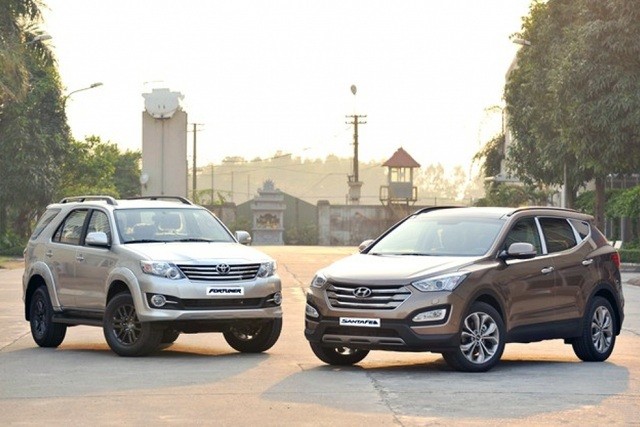 Toyota Fortuner and Hyundai Santa Fe SUVs
Toyota Fortuner and Hyundai Santa Fe SUVs
- CUV: With a light and flexible unibody chassis, CUVs are an optimal choice for daily urban commuting, going to work, picking up children, or family travel on highways. CUVs offer comfort, fuel economy and stable performance on flat roads. Popular CUV models in Vietnam include Honda CR-V, Mazda CX-5, Hyundai Tucson…
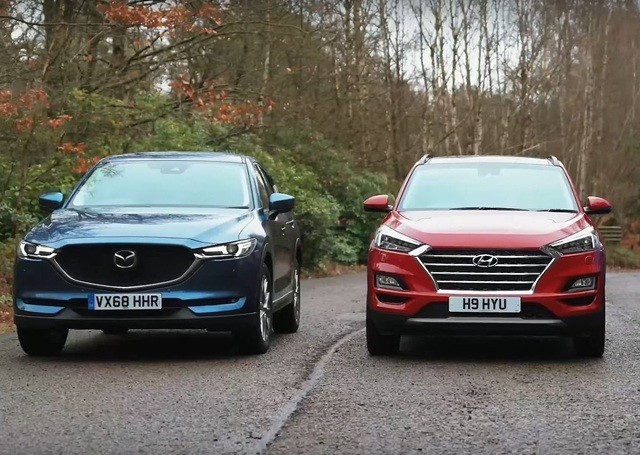 Popular CUV models in Vietnam such as Mazda CX-5, Hyundai Tucson, Kia Sportage
Popular CUV models in Vietnam such as Mazda CX-5, Hyundai Tucson, Kia Sportage
Conclusion: The Importance of Chassis Structure
Understanding the truck chassis structure (vehicle chassis) is a key factor in helping car buyers clearly distinguish between SUVs and CUVs, thereby making an informed decision that suits their needs and personal economic conditions. If you prioritize off-road capability, durability and superior power, an SUV with a body-on-frame chassis is the top choice. Conversely, if you value comfort, fuel economy and primarily travel in urban areas, a CUV with a unibody chassis will be your ideal companion.

